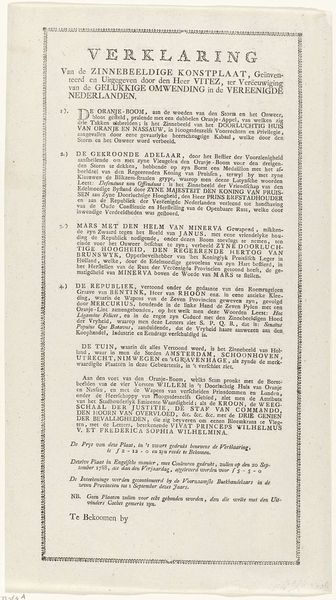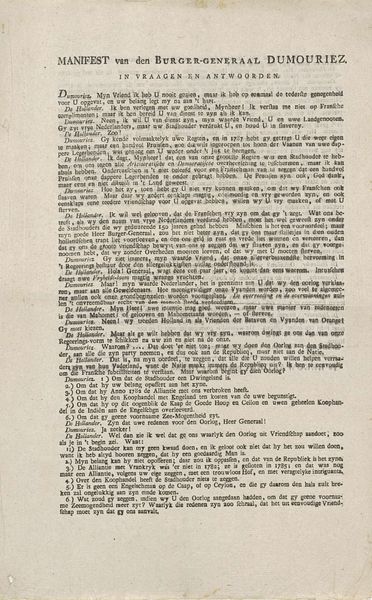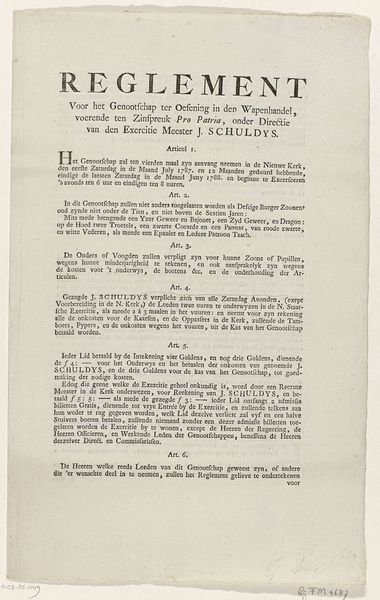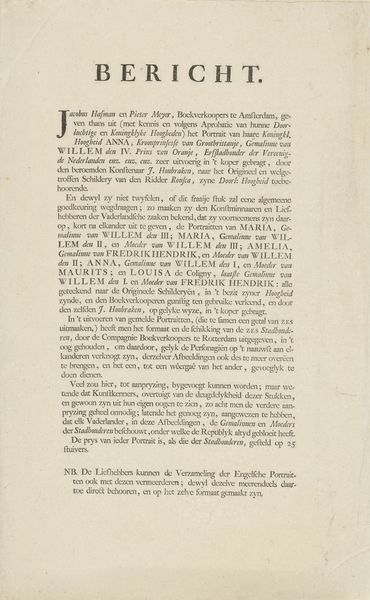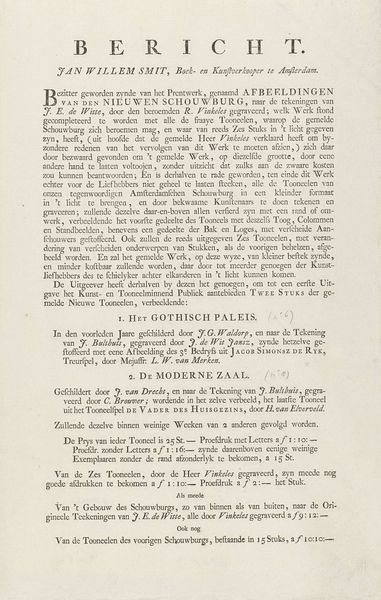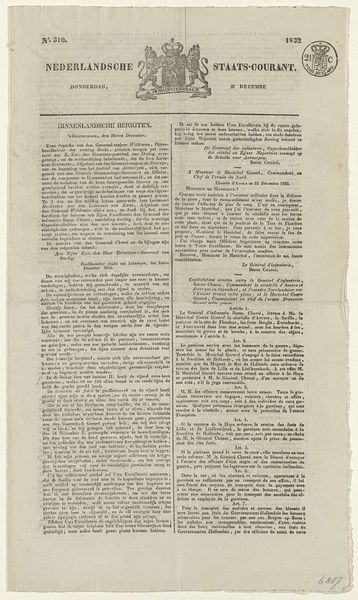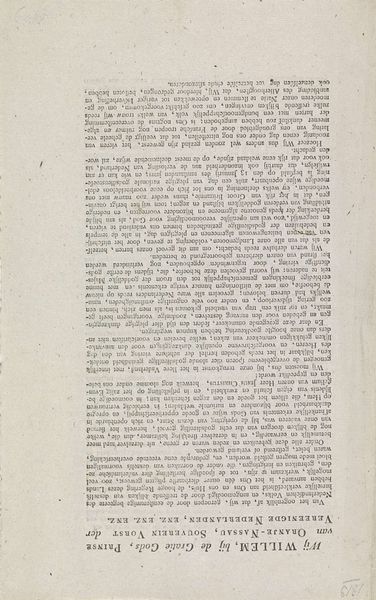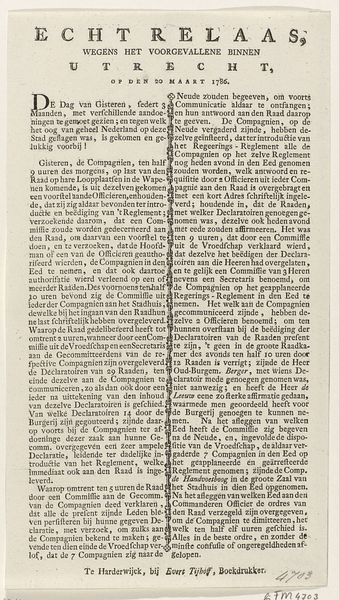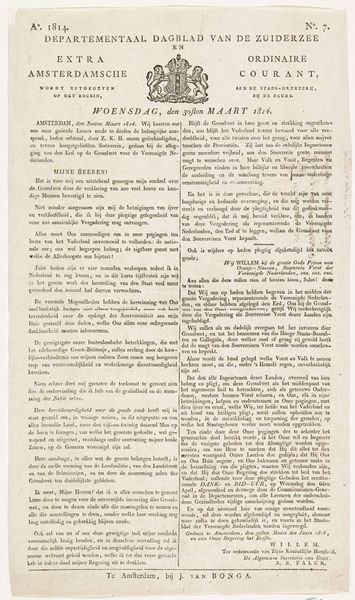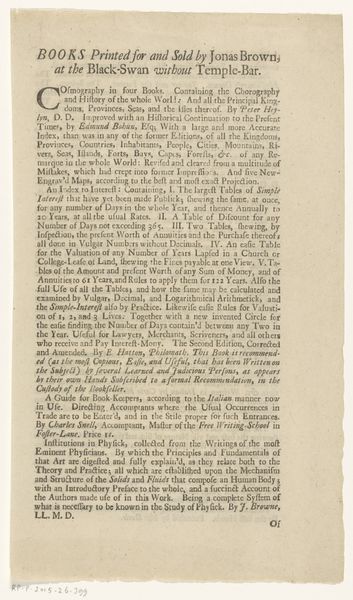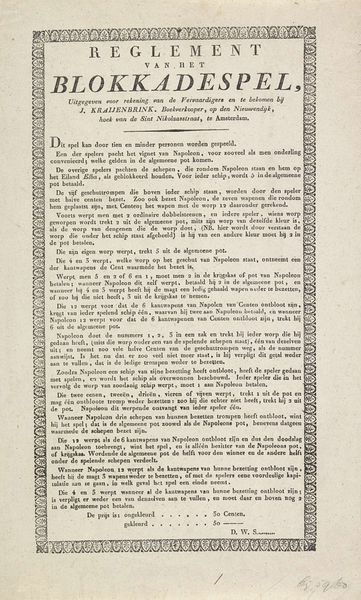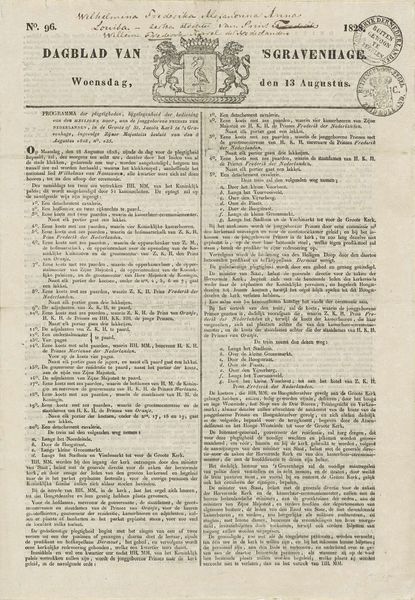
Verklaring bij de Allegorie op het herstel van stadhouder Willem V, 1787 1787
0:00
0:00
print, paper, engraving
#
aged paper
#
dutch-golden-age
# print
#
old engraving style
#
paper
#
text
#
history-painting
#
captioned image
#
engraving
#
historical font
Dimensions: height 326 mm, width 206 mm
Copyright: Rijks Museum: Open Domain
Curator: We’re standing before "Verklaring bij de Allegorie op het herstel van stadhouder Willem V," a print dating back to 1787, housed in the Rijksmuseum. Editor: It’s arresting! The starkness of the black ink on the aged paper immediately pulls you in, and the density of the text creates a visually imposing block. There is a distinct air of… austerity. Curator: Indeed. This engraving served as a key, or explanation, to a larger allegorical print celebrating the restoration of Stadtholder Willem V. It’s fascinating how this piece itself becomes a primary source, interpreting another artwork from the period. Editor: The sheer volume of text, though, feels almost overwhelming. I’m struck by the labour involved in both creating and deciphering such a piece. Think about the craftsmanship involved in meticulously engraving this text, versus the effort of contemporary viewers to access that era. It speaks to the time and resources afforded to visual messaging in the 18th century. Curator: Absolutely. And if you look closely, you’ll see it details the symbolism. The Orange tree, the crowned eagle, Mars with Minerva's helmet – each element meticulously explained in relation to Willem V’s restoration and the political climate of the Dutch Republic. It utilizes established iconographic forms. Editor: But doesn't it do more than just translate symbolism? It actively constructs meaning, positioning Willem V's return as a triumph of order and stability. The use of such specific font and paper suggests that it has to convey legitimacy. A carefully curated message intended for mass consumption. Curator: That's precisely right. The detailed descriptions ensure that the intended message—a narrative of restoration and national unity—is unequivocally received. Also, consider the distribution of such a print: Who was meant to see it? Where would it have been displayed or circulated? Editor: Those questions definitely give us clues about the print’s original purpose, revealing aspects of the society for which the engraving was produced, distributed and consumed. Curator: Considering the context and careful rendering, this unassuming print unveils the powerful convergence of art, politics, and social messaging in the Dutch Republic. Editor: Yes, moving beyond the surface of a simple "explanation" exposes the complex machinery of image-making and the narratives they served to build and reinforce.
Comments
No comments
Be the first to comment and join the conversation on the ultimate creative platform.
